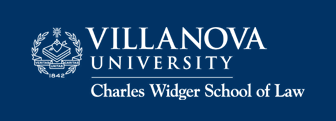Abstract
Much has been written about the protections afforded by the Free Exercise Clause when government regulation impacts the religious practices of individuals, and if one looks for guidance from the Supreme Court, the rules are fairly clear. Prior to 1990, the Supreme Court had long employed a balancing approach that afforded—at least in theory—significant relief. Under this approach individuals were entitled to exemptions from laws which substantially burdened religious conduct unless enforcement was justified by a compelling state interest. In 1990, in Employment Division v. Smith, the Supreme Court abandoned this balancing test for all but a few categories of cases. Under the Court’s new rule, the Free Exercise Clause does not excuse individuals from compliance with neutral, generally applicable laws that are not intended to burden religious exercise. Relief is only appropriate where laws are designed to thwart religious exercise.
The judicial landscape is much different when one turns to the free exercise rights of religious organizations. Government regulation frequently impacts the activities of religious groups, and clashes between religious organizations and regulators are common. Surprisingly, however, the Supreme Court has never directly addressed the scope of free exercise protections when government regulation interferes with the internal affairs of religious groups. There are cases involving religious organizations, to be sure, but in none of these cases has the Court addressed neutral government regulation that directly impinges upon internal church affairs.
This article begins by identifying three possible approaches to such regulation, all of which can be supported indirectly by Supreme Court precedent. The article then examines the Supreme Court’s decision in Smith for guidance in choosing from among them. For some courts and scholars, the meaning of Smith for religious groups is simple: religious groups, just like religious individuals, are not entitled to special exemptions from neutral state action. For others, however, Smith is not relevant at all to the free exercise rights of religious groups, and they look to other lines of Supreme Court precedent for appropriate standards. My examination of Smith reveals that Smith is not only relevant to an analysis of religious group rights but is also very helpful for choosing among the available options. The opinion in Smith raises a number of issues that clarify what is at stake in making this choice, and its lessons are surprising. When read carefully, Smith supports a broad right of “church autonomy” that prohibits government interference with internal church affairs regardless of whether the interference is intentional and regardless of whether the activities affected are religious in nature or more mundane matters.
Disciplines
Constitutional Law | Jurisprudence
Date of this Version
July 2004
Recommended Citation
Brady, Kathleen A. , "Religious Organizations and Free Exercise: The Surprising Lessons of Smith" (2004). Working Paper Series. 19.
https://digitalcommons.law.villanova.edu/wps/art19



Comments
The final version of this working paper is forthcoming as a publication of the Brigham Young University Law Review